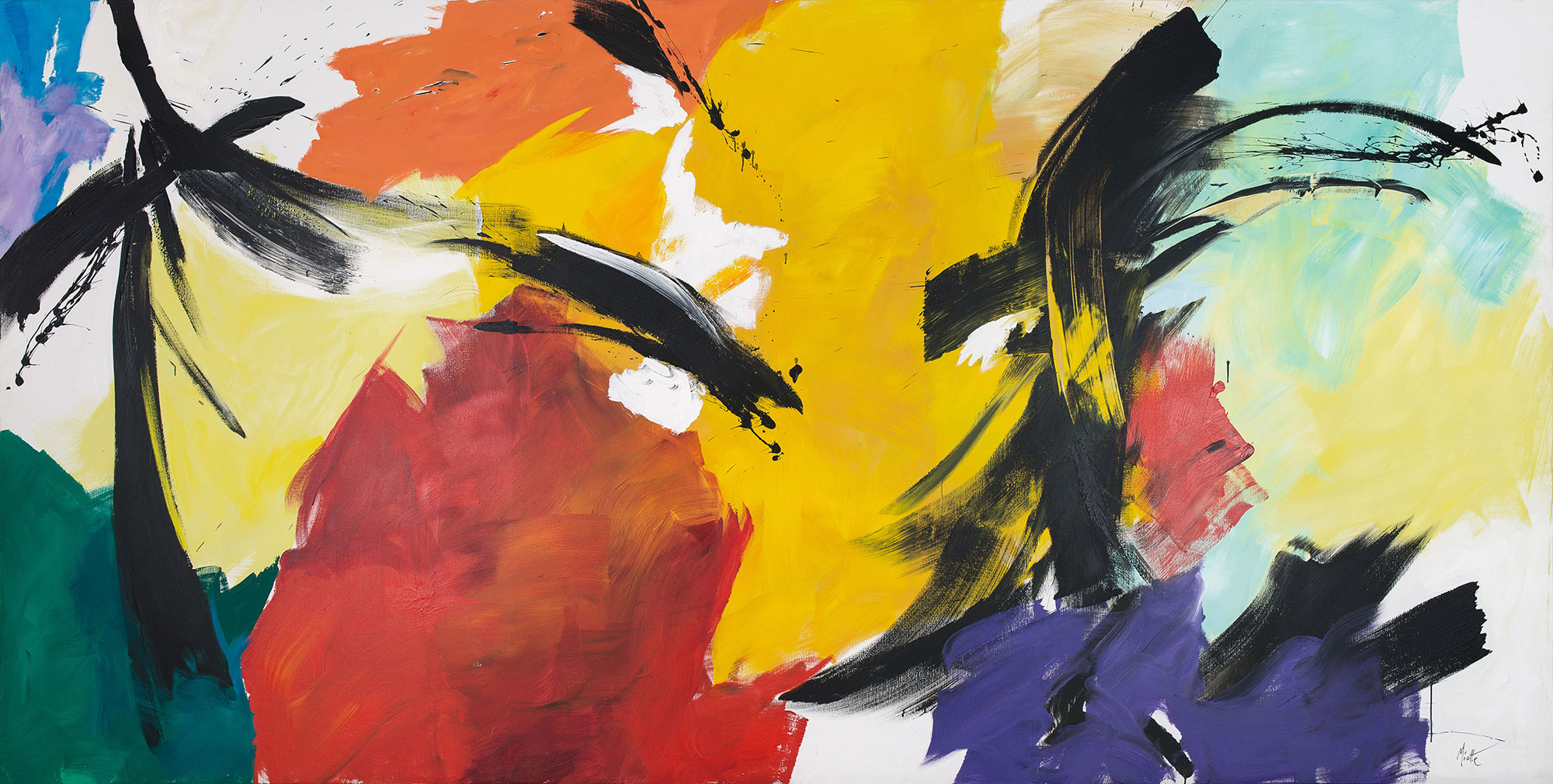JEAN MIOTTE
Focus on an artwork

JEAN MIOTTE
Untitled – 2001
Acrylic on canvas – 76.8 x 153.5 in.
Galerie Diane de Polignac, Paris
“Painting is not a speculation of the mind or the intellect; it is a gesture that you carry within yourself.”
With this quote, Jean Miotte gives us the keys to understanding his work. Working at the intersection of Lyrical Abstraction, Informal Art and Tachisme, Jean Miotte (1926-2016) created a body of work that is both a spontaneous form of painting born of free gestural expression and a creative synthesis bringing together painting, music and dance. In the world of the artist, painting and movement were intimately linked. With close connections to the world of dance – he was friends with the dancers Zizi Jeanmaire and Wladimir Skouratoff – and the performing arts, Miotte also designed several theatre sets.

Zizi Jeanmaire and Wladimir Skouratoff – c.1955

JEAN MIOTTE – Scale model for a ballet set – 1948
This synthesis of painting and movement was particularly effective in large-format works. Well-versed in the fresco technique, which Miotte had used in his work, the artist often tried his hand at large-scale painting. Among other projects, he was commissioned by the city of Paris to make a very large painting entitled Sud for the hall of honour of the Bastille Opera House.
The large scale also enhanced the all-over painting technique through which the painting extended beyond the margins of the picture. This is particularly reminiscent of the work of Sam Francis, who wanted to paint the immensity of the sky; the two artists knew each other and both had a studio just outside Paris for a time – Jean Miotte in Meudon, Sam Francis in Ville d’Avray.

SAM FRANCIS
In Lovely Blueness (n°1), 1955 – 1957
Oil on canvas, 300 x 700 cm / 118.11 x 275.59 in.
Musée national d’Art moderne – Centre Pompidou, Paris
The large format also meant painting large spaces, which is where Jean Miotte and Olivier Debré’s work converged. This brings to mind Olivier Debré’s large-scale stage sets with his stage curtains for the Hong Kong Opera House (1989) and the new Shanghai Opera House (1999). For Olivier Debré, too, painting, music and dance were linked and even formed the subject of a ballet – Signes – which was presented at the Bastille Opera House in Paris in 1997 and in 2013.

OLIVIER DEBRE
Signes, 1997
Sets and costumes by Olivier Debré
Choreography by Carolyn Carlson
In this very large work by Jean Miotte from 2001, the power of the colour palette underpins the free gestures of the artist, who sweeps his brush across the surface of the canvas in dance-like movements. The clashing dashes of colour seem to resonate like the musical notes produced by a symphony orchestra, while the white spaces in the background are like a breath, phrasing this musical piece. The imposing format of the canvas only heightens the range of its visual and “sonic” impact.
This superb painting from 2001 presents us with a true synthesis of painting, music and dance.
Text: Astrid de Monteverde
© Astrid de Monteverde / Diane de Polignac Gallery

